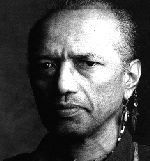Wampanoag (Mashpee) Literature


Nauset or Cape Cod Indians, from the exposed position on the Cape, include the Mashpees of the Wampanoag tribe. Their entire territory came under the observation of many early explorers to the "New World," including Samuel Champlain in 1606, and the English Captain Thomas Hunt in 1614-1615. Hunt kidnapped 27 Wampanoag Indians, all of whom were sold into slavery, a just cause perhaps why five years later the Pilgrims landed and first were met by wary, unfriendly Wampanoags. Later, their Chief Massasoit officially welcomed the Pilgrims at Plymouth and signed a treaty of friendship dated 1621.
This area had escaped a great smallpox epidemic of 1617. The Nausets increased in population as tribal members were driven from their original villages by whites toward 1700. Mashpee village became the principal location of Wampanoags, also referred to as Massasoits after their famous Chief Massasoit. Later, his second son succeeded him and was called King Philip, establishing a strong Indian confederacy. King Philip's war against the whites, 1675-1676, in which the Chief was killed, resulted in the loss of central power of the New England tribes. Long established tribes on Martha's Vineyard also belong to this Group, derived from the Algonquian linguistic family.